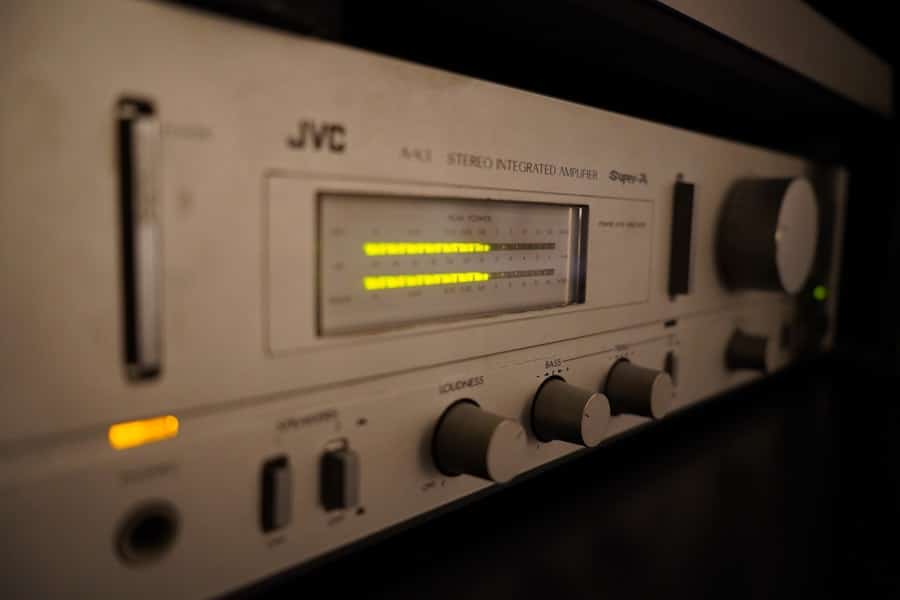The advent of smart home systems has revolutionized the way we interact with our living spaces. These systems integrate various technologies to create a seamless environment that enhances convenience, efficiency, and comfort. Smart home technology encompasses a wide range of devices, from smart thermostats and lighting systems to security cameras and appliances, all designed to be interconnected and controllable through a central hub or mobile application.
The primary goal of these systems is to simplify daily tasks and improve the quality of life for users by automating routine activities. As technology continues to evolve, the concept of minimal interaction in smart home design has gained traction. This approach emphasizes the importance of creating systems that require little to no manual input from users, allowing them to enjoy the benefits of automation without the burden of constant management.
By focusing on intuitive design and user-friendly interfaces, smart home systems can cater to a broader audience, including those who may not be tech-savvy. The integration of minimal interaction principles into smart home technology not only enhances user experience but also promotes energy efficiency and sustainability.
Key Takeaways
- Smart home systems are designed to automate and simplify daily tasks for homeowners.
- Minimal interaction in smart home design is important for creating a seamless and convenient user experience.
- Voice-activated control systems allow users to interact with their smart home devices using natural language commands.
- Motion sensors and automated responses enable smart home systems to anticipate and respond to the needs of the user.
- Integration of artificial intelligence enhances the capabilities of smart home systems and enables personalized experiences for users.
Importance of Minimal Interaction in Smart Home Design
Minimal interaction in smart home design is crucial for several reasons. First and foremost, it addresses the common challenge of user fatigue associated with managing multiple devices and applications. As smart homes become increasingly complex, users may find themselves overwhelmed by the sheer number of controls and settings available.
By streamlining interactions and reducing the need for constant engagement, designers can create a more enjoyable experience that encourages users to embrace technology rather than shy away from it. Moreover, minimal interaction design aligns with the growing trend of passive technology, where devices operate autonomously based on user preferences and environmental conditions. For instance, a smart thermostat can learn a household’s heating and cooling patterns over time, adjusting settings automatically without requiring manual input.
This not only saves energy but also ensures that users remain comfortable without having to think about it. The emphasis on minimal interaction ultimately leads to a more intuitive and user-friendly environment, making smart home technology accessible to a wider demographic.
Voice-Activated Control Systems

Voice-activated control systems have emerged as a cornerstone of minimal interaction in smart home design. These systems allow users to control various devices through simple voice commands, eliminating the need for physical interfaces or mobile applications. Popular platforms such as Amazon Alexa, Google Assistant, and Apple Siri have made significant strides in natural language processing, enabling them to understand and respond to a wide range of requests with remarkable accuracy.
The convenience of voice-activated systems is particularly evident in scenarios where users may have their hands full or are otherwise occupied. For example, a user cooking in the kitchen can easily adjust the lighting or play music by simply speaking a command. Additionally, these systems can be programmed to recognize individual voices, allowing for personalized responses based on who is speaking.
This level of customization enhances the user experience and fosters a sense of ownership over the smart home environment.
Motion Sensors and Automated Responses
Motion sensors play a pivotal role in creating a smart home that operates with minimal user interaction. These devices detect movement within a designated area and can trigger automated responses based on pre-set conditions. For instance, motion sensors can be integrated with lighting systems to automatically illuminate hallways or rooms when someone enters, providing both convenience and safety without requiring any manual input.
Furthermore, motion sensors can enhance energy efficiency by ensuring that lights and appliances are only active when needed. In a typical scenario, if no movement is detected in a room for a specified period, the system can automatically turn off lights or reduce heating, thereby conserving energy. This not only reduces utility bills but also contributes to a more sustainable lifestyle.
The integration of motion sensors into smart home systems exemplifies how technology can work behind the scenes to improve daily life while minimizing user effort.
Integration of Artificial Intelligence
Artificial intelligence (AI) is at the forefront of transforming smart home systems into intelligent environments that anticipate user needs and preferences. By leveraging machine learning algorithms, AI can analyze data collected from various devices to identify patterns and make informed decisions about how to optimize the home environment. For example, an AI-powered smart thermostat can learn when occupants are typically at home or away and adjust heating or cooling settings accordingly.
The integration of AI also enhances the ability of smart home systems to provide proactive suggestions based on user behavior. For instance, if a user consistently sets their coffee maker to brew at 7 AM on weekdays, the system can automatically initiate this process without any input from the user. This level of automation not only simplifies daily routines but also fosters a sense of trust in the technology as it becomes more attuned to individual lifestyles.
As AI continues to evolve, its role in smart home systems will likely expand, leading to even greater levels of automation and minimal interaction.
Customization and Personalization for User Preferences

Customization and personalization are essential components of minimal interaction design in smart home systems. Users have diverse preferences when it comes to their living environments, and allowing them to tailor their smart home experiences enhances satisfaction and usability. Many smart home devices come equipped with customizable settings that enable users to adjust parameters such as lighting intensity, temperature preferences, and even music playlists according to their individual tastes.
For example, smart lighting systems can be programmed to create different moods for various activities—bright white light for working or studying, warm tones for relaxation, or colorful hues for entertaining guests. Users can set these preferences once, and the system will remember them for future use, requiring minimal interaction thereafter. This level of personalization not only makes the technology more appealing but also fosters a deeper connection between users and their smart homes.
Security and Privacy Considerations in Minimal Interaction Design
While minimal interaction design offers numerous benefits in terms of convenience and efficiency, it also raises important security and privacy considerations that must be addressed. As smart home systems become increasingly interconnected, they create potential vulnerabilities that could be exploited by malicious actors. For instance, if a voice-activated system is not properly secured, unauthorized individuals may gain access to sensitive information or control over connected devices.
To mitigate these risks, manufacturers must prioritize robust security measures in their designs. This includes implementing strong encryption protocols for data transmission, regular software updates to patch vulnerabilities, and user authentication methods such as biometric recognition or two-factor authentication. Additionally, users should be educated about best practices for securing their smart homes, such as changing default passwords and regularly reviewing device permissions.
Privacy concerns also arise from the data collection practices inherent in many smart home systems. Devices often gather information about user habits and preferences to enhance functionality; however, this data must be handled responsibly. Transparent privacy policies that outline how data is collected, stored, and used are essential for building trust between manufacturers and consumers.
By addressing these security and privacy considerations proactively, designers can create minimal interaction smart home systems that prioritize user safety while delivering convenience.
Future Trends in Smart Home Systems for Minimal Interaction
Looking ahead, several trends are poised to shape the future of smart home systems with an emphasis on minimal interaction design. One significant trend is the continued advancement of voice recognition technology. As natural language processing improves, voice-activated systems will become even more intuitive and capable of understanding complex commands or contextual cues.
This evolution will further reduce the need for manual input while enhancing user engagement with their environments. Another emerging trend is the integration of augmented reality (AR) into smart home interfaces. AR has the potential to revolutionize how users interact with their devices by overlaying digital information onto their physical surroundings.
For instance, users could visualize energy consumption data or receive maintenance alerts through AR displays projected onto their walls or devices. This innovative approach could streamline interactions while providing valuable insights into home management. Additionally, as sustainability becomes an increasingly pressing global concern, future smart home systems will likely incorporate more eco-friendly features that require minimal user intervention.
Smart appliances may automatically adjust their operations based on real-time energy availability from renewable sources or optimize water usage based on weather forecasts. By aligning minimal interaction design with sustainability goals, manufacturers can create homes that are not only convenient but also environmentally responsible.
By prioritizing ease of use through voice activation, motion sensors, AI integration, customization options, and robust security measures, these systems are becoming more accessible and beneficial for a diverse range of users. As we look toward the future, ongoing advancements promise to further enhance our living environments while minimizing the effort required to manage them effectively.
If you are interested in exploring the latest advancements in technology, you may also enjoy reading about the iPhone 14 Pro and its powerful features. This article delves into how Apple continues to push the boundaries of smartphone capabilities. Additionally, if you are a fan of manga, you might want to check out the article on the best software for manga, which provides insights into tools that can enhance your manga creation process. Lastly, if you are a parent looking to introduce your child to technology, the article on choosing your child’s first tablet offers valuable tips and recommendations.
FAQs
What are smart home systems designed for minimal interaction?
Smart home systems designed for minimal interaction are equipped with advanced technology and automation features that allow users to control and manage their home environment with minimal effort. These systems are designed to anticipate and fulfill the needs of the users without requiring constant input or supervision.
What are the key features of smart home systems designed for minimal interaction?
Key features of smart home systems designed for minimal interaction include voice control, motion sensors, automated scheduling, and machine learning algorithms. These features enable the system to learn and adapt to the users’ preferences and behavior, reducing the need for manual input.
How do smart home systems minimize the need for user interaction?
Smart home systems minimize the need for user interaction by automating routine tasks such as adjusting the temperature, turning on/off lights, locking doors, and managing energy usage. These systems use sensors and data analysis to anticipate the users’ needs and proactively take action without requiring explicit commands.
What are the benefits of smart home systems designed for minimal interaction?
The benefits of smart home systems designed for minimal interaction include convenience, energy efficiency, enhanced security, and improved quality of life. These systems simplify daily routines, reduce energy waste, and provide peace of mind by monitoring and managing the home environment with minimal user intervention.
How do smart home systems prioritize user privacy and security?
Smart home systems prioritize user privacy and security by implementing robust encryption, authentication protocols, and data protection measures. Additionally, these systems allow users to customize privacy settings and control the access permissions of connected devices and third-party applications.

